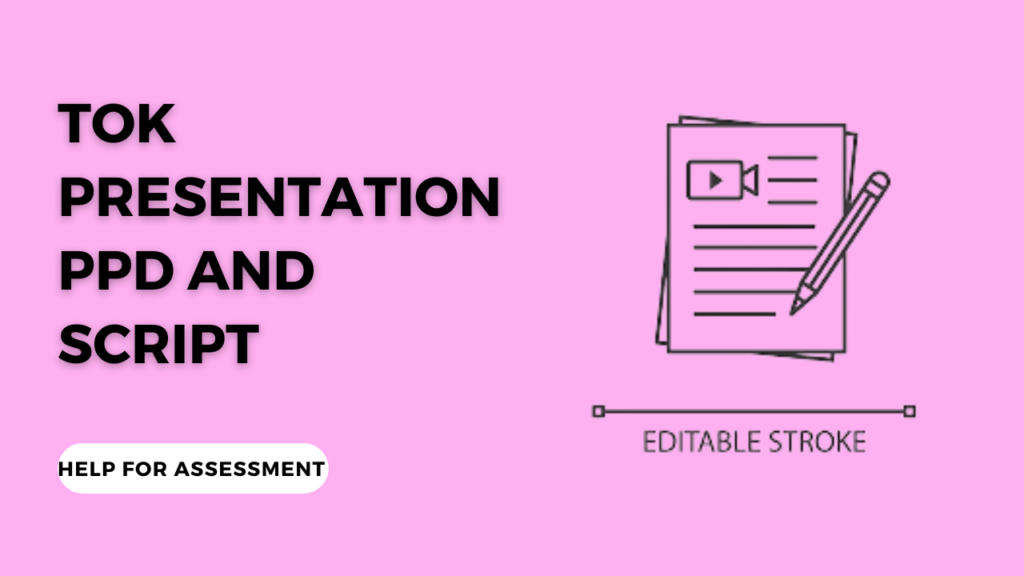It is easy to plan an IB Tok presentation in your mind from A-Z, but once you take the stage, fear and anxiety of doing the IB Tok Presentation before due time can destroy everything.
Although you may be conjecturing on how to start of my IB TOK presentation, the fact is, you will still be required to fill out the presentation planning document (PPD), write a PPT and write a script showing your flow of ideas.
The IB TOK PPD and Script helps with stage fear, but more importantly, they are a prerequisite to passing your IB theory of knowledge (TOK) assessment.
The 500-word TOK presentation preparation document (PPD) is how the IBO knows that you actually gave a presentation on the chosen topic, even though they can still go ahead and request more documents.
With that in mind, it is imperative that you fill the PPD appropriately and write an effective presentation script to help you along the way.
This article compiled by Help for Assessment IB Tok experts is a guide if you are stuck with any part of the TOK PPD or script, our experts can also write it for you from scratch through our ToK Essay writing service at the best rates while ensuring 100% quality and confidentiality for you.
In the meantime, we invite you to walk with us as we explore TOK presentation scripts and how to fill the presentation preparation document. We will cover:
Understanding IB TOK Presentation PPD and Script
The Ib ToK presentation accounts for 33% of the total course points and is meant to test your understanding and application of particular concepts in real-life situations.
The presentation comes after you have submitted the TOK essay. You can read all about the essay here.
Preparing your presentation starts with choosing a good TOK topic and knowledge question.
You then choose a real-life situation (RLS) that concerns the knowledge question you have formulated and structure your presentation around it.
The Presentation Preparation Document is an official IBO form that you are required to fill as evidence that you actually completed the presentation part of the assessment.
A presentation script is just that: a document containing the words and points you intend to put across in your presentation. It helps you organize your thoughts, inspire confidence, reduce distractions, and make the best of the 30 minutes or so you will be given.
You can organize this in the form of Powerpoint slides or just as a handwritten document with cues if you don’t want your presentation to sound too scripted.
How to Fill The TOK PPD
The presentation planning document (PPD) will be sent to the IBO to help moderate the grades issued.
It usually consists of 3 pages with a section for the student and the teacher.
As you can see, filling the document is a pretty straightforward process.
It is broken down in sections covering the most important parts of the presentation:
- Your real-life situation
- Knowledge question
- The connection between them, arguments, and conclusions.
Note that there is a 500-word limit on the PPD, so you should keep your responses concise and to the point.
The other two pages of the TOK PPD look like this:
You will need to submit the PPD to your instructor before the presentation, after which they can choose to forward it to IB.
Understanding the IB TOK Presentation Script
Most students start off thinking of the script as a document they will be reading word-for-word, but in fact, it is a Powerpoint presentation that marks the major points and arguments with which you intend to convince your audience.
Think of the script is a series of slides summarizing your presentation from the introduction paragraph to the conclusions.
It includes major parts such as the knowledge question, real-life situation, and the various arguments.
When doing the presentation, you will be filling in the gaps left in your slides to make your presentation more compelling and memorable.
There is no one way to create a TOK presentation script, but the following points to note will help to guide you along the way:
It is also important to note that the content written on slides could also be drafted in the form word document. However, in most cases, scripts are marked through your instructor grading your oral presentation of the content in the slides or word doc.

